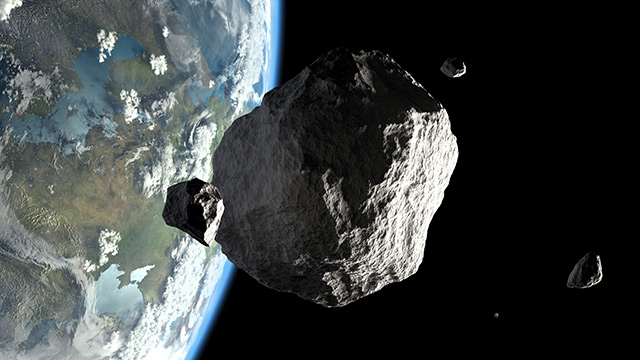Jaws on the beachfront: North Carolina man finds palm-sized MEGALODON tooth buried on the shore
02/22/2020 / By Michael Alexander

A typical beach stroll usually ends with someone finding a few pretty seashells, coral fragments and colorful beach glass. One man, however, found something prehistoric after going on what was supposed to be an ordinary beach stroll with his family.
According to Harvey Wall, he and his family were looking for seashells when he spotted an object sticking out in the tide.
The object, measuring about six inches from tip to tip, turned out to be a tooth from a megalodon — a gigantic prehistoric shark that scientists say went extinct about 3.6 million years ago.
“I was surprised [that it was there]. We were looking for seashells and walking our dogs. I could only see the black part [of the tooth] in low tide. I kicked it and it flipped over, exposing the whole tooth,” Wall said.
He subsequently shared photos of his prehistoric find on Facebook, where it gained substantial traction and attention.
Wall shouldn’t have been surprised, however — after all, North Carolina is a hotspot when it comes to megalodon teeth, to the point where the state declared the fossil as its official symbol back in 2013.
According to marine biologist Chris Slog, this is because of the presence of ancient river beds, dubbed Megalodon Tooth Ledges, which hold high concentrations of the fossils.
“The teeth have been found all over the world but not in the concentrations we’re finding here,” Slog said.
Slog, who also takes tourists and fossil finders on tours, said that these ancient river beds are located about 26 to 40 miles off the coast of Wrightsville Beach, beneath some 110 feet or so of water.
Aside from Wall, a few other North Carolina residents have also found megalodon teeth at the same general area, including a middle school girl who found a buried megalodon tooth at North Topsail Beach while on spring break.
What is megalodon?
Carcharocles megalodon, or simply megalodon, is an extinct species of shark that lived during the Early Miocene to the Pliocene periods, or approximately 23 to 3.6 million years ago.
Considered one of the largest predators in history, the megalodon — its name literally means “big tooth” — is said to have grown to lengths of up to 60 feet and weighed as much as 100 tons.
According to scientists, the megalodon, which is said to have looked like a stockier version of modern sharks, possessed a bite force of about 108,514 newtons or 10.8 to 18.2 tons — enough force to crush a small car.
Scientists, however, say the megalodon was not the singular aquatic super-predator during the Miocene, as it shared swimming space with the Livyatan melvillei, a gigantic predatory whale which scientists estimate to have grown up to 57 feet. Scientists say the two leviathans could have occupied the same environmental niche and hunted the same prey.
Despite being an impressive specimen, however, the megalodon was one of the many megafaunal species to die off in a mass marine extinction during the Pleistocene period.
Scientists say another reason for the species’ extinction could have been its inability to regulate body temperatures. According to scientists, the cold-blooded megalodon could not adapt to the cooler ocean temperatures during the Pliocene era.
Another, more plausible reason for the megalodon’s extinction is recently gaining traction, however. According to new research published in Peer J, the megalodon may have been edged out by its smaller, but more well-adapted, cousin — the great white shark (Carcharodon carcharias). (Related: Scientists warn that the world’s most unusual sharks and rays are on the “brink of extinction”.)
The researchers speculate that competition with the modern great white shark is a more likely reason for megalodon’s extinction, noting that the smaller shark’s appearance may have heralded the start of the megalodon’s decline.
“We propose that this short overlap (3.6-4 million years ago) was sufficient time for great white sharks to spread worldwide and outcompete O. megalodon throughout its range, driving it to extinction-rather than radiation from outer space,” vertebrate paleontologist Robert Boessenecker, who led the new study, said.
Sources include:
Tagged Under: animals, Archaeology, artifacts, beach, biodiversity, conservation, Ecology, environment, extinction, fish, fossils, marine animals, marine life, megalodon, Oceans, paleontology, prehistoric animals, prehistoric fish, prehistoric shark, sharks, weird science, wildlife
RECENT NEWS & ARTICLES
COPYRIGHT © 2017 DISCOVERIES NEWS



















